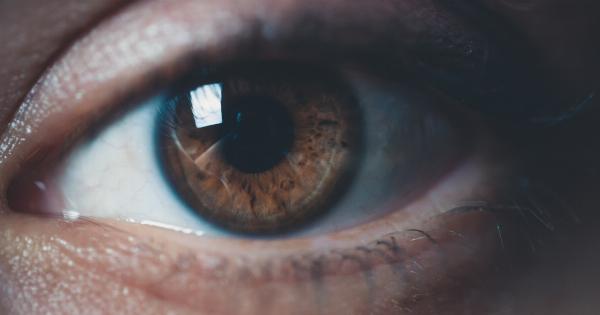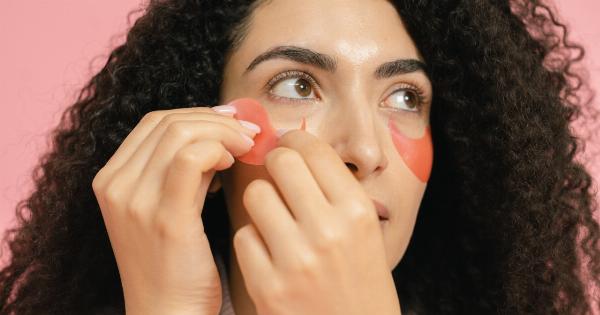Color contact lenses are becoming increasingly popular as people seek to switch up their looks. They offer the possibility of changing one’s eye color without having to go through surgical color alteration.
They come in a wide range of shades and styles that can suit all sorts of needs and preferences, but did you know that there are risks associated with using these lenses?.
What are Color Contact Lenses?
These lenses cover the cornea, which means that there is a risk of blocking oxygen from getting into the eyes. The result can be irritation, discomfort, and even severe damages if the lenses are worn for prolonged periods.
While colored contacts are made to be as breathable as possible, the materials used to alter the color can interfere with their permeability, thus impacting the wearer’s eyesight.
Short-term risks
Short-term use of color contact lenses can lead to a number of issues, including:.
1. Allergies
Color contact lenses contain dyes and pigments that can trigger allergic reactions in some people, leading to redness, itchiness, and swelling.
2. Eye Irritation
Since these lenses cover the eyes, they can irritate them, especially, if worn for extended periods. Common problems include dryness, itchiness, and redness.
3. Eye Infections
Another risk of wearing these lenses is the potential of developing eye infections.
Eye infections such as pink eye are highly contagious, and by wearing color contact lenses, people increase the risk of transferring the bacteria from the lenses directly to the eyes, causing infection.
4. No Ventilation
When you wear color contact lenses, you block the flow of oxygen to your eyes, which might lead to redness, discomfort, and even more severe issues such as hypoxia, which can lead to reduced vision or complete blindness.
Long-term risks
Long-term risks of using color contact lenses are much more severe than their short-term disadvantages. In some people, without proper care and attention, they can lead to:.
1. Corneal Ulcers
Color contact lenses may cause a corneal ulcer’, a painful sore on the cornea layer of the eye. This condition can lead to vision impairment and even permanent blindness if not treated in time.
2. Corneal Neovascularization
One of the more severe long-term risks of wearing colored contact lenses is corneal neovascularization. Color lenses may cause your cornea’s blood vessels to grow into the center of the cornea.
This can lead to vision loss and require a corneal transplant if it becomes severe.
3. Corneal Abrasions
Corneal abrasions are similar to corneal ulcers; however, they are slightly less severe and are often caused by physical injuries. They can be severe and even require surgery in some cases.
4. Vision Impairment
Color contact lenses may lead to vision impairment due to any of the above conditions or any other complications that may arise from wearing these lenses. In severe cases, they can cause blindness or reduced vision.
Why are color contact lenses dangerous?
Color contact lenses can be dangerous when not correctly used since they can cause various eye problems and even lead to permanent vision impairment. Some of the reasons why colored contact lenses are dangerous include:.
1. They can cause eye infections
Sometimes, colored contact lenses do not allow enough oxygen into the eyes, making it easier for bacteria and fungi to grow, and it eventually infects the eyes.
2. Many buyers get them without prescriptions
Regardless of how much color contact lenses protect the eyes against UV rays, it is not a safe alternative for wearing glasses or standard contact lenses. Poor-fitting lenses and extended wear put the eyes at risk.
3. They can cause corneal damage
The cornea relies on oxygen; hence, when colored contacts lenses deprive it of such, it can lead to damage such as corneal ulcers, abrasions, and scarring, causing permanent vision problems.
4. Poor-quality lenses
Many cheap color contact lenses can pose serious threats to your eyesight. The pigment can leak out, leading to inflammation and irritation in the eyes, causing temporary vision problems.
How to protect your eyes when using color contact lenses
When used correctly and with appropriate care, color contact lenses can be a safe and fun way to alter your look. Here are some tips to keep your eyes safe when using colored lenses:.
1. Always obtain a prescription
Visit an eye doctor to obtain a prescription before purchasing colored contacts. This consultation includes a fitting to make sure the contacts fit precisely in your eyes, allowing enough oxygen to pass through.
2. Purchase quality lenses
Do not opt for cheap and low-grade varieties of color contact lenses. Instead, consider the lens’ quality and purchase from an authorized dealer only.
3. Follow safety protocols
Always follow correct hygiene and safety protocols when using or storing your lenses. Unsanitary conditions and contamination can lead to serious eye infections.
4. Limit your usage and wear time
Limit the hours you wear your lenses to the time recommended by your eye doctor. Avoid sleeping in your contacts or wearing them for extended periods, as this can lead to severe and long-term damage to your eyes.
5. Never share your lenses
Never share your lenses with anyone, even family or friends. This puts you at risk of bacteria and infections that could be harmful to your eyesight.
Conclusion
While color contact lenses are a fun way to switch up your looks, it is vital to understand the risks associated with their use. In sum, colored contacts should only be purchased from authorized dealers and fitted by a qualified eye specialist.
Also, it is important to practice good hygiene habits and follow safety protocols when handling the lenses. Above all, it is advisable not to use colored contact lenses inappropriately or for a prolonged period.




























